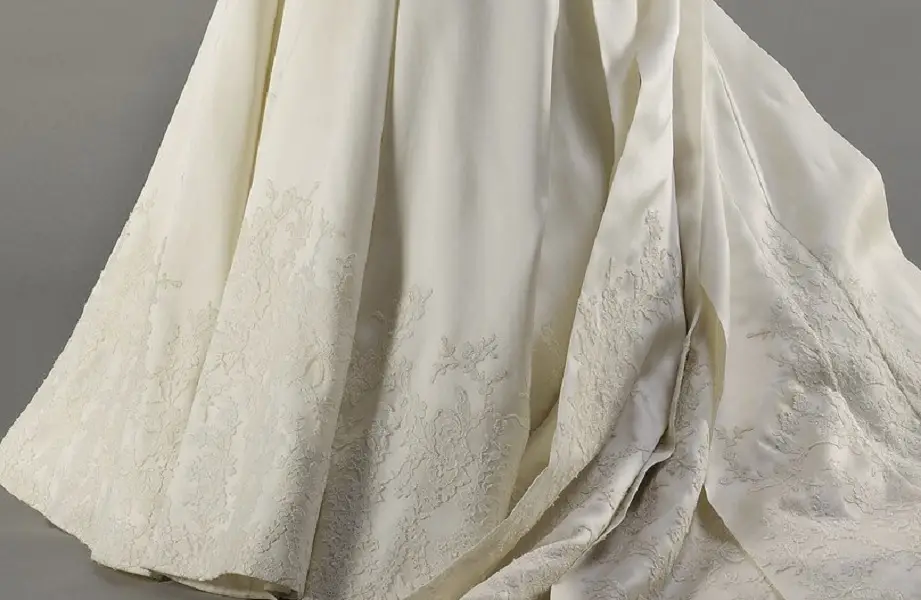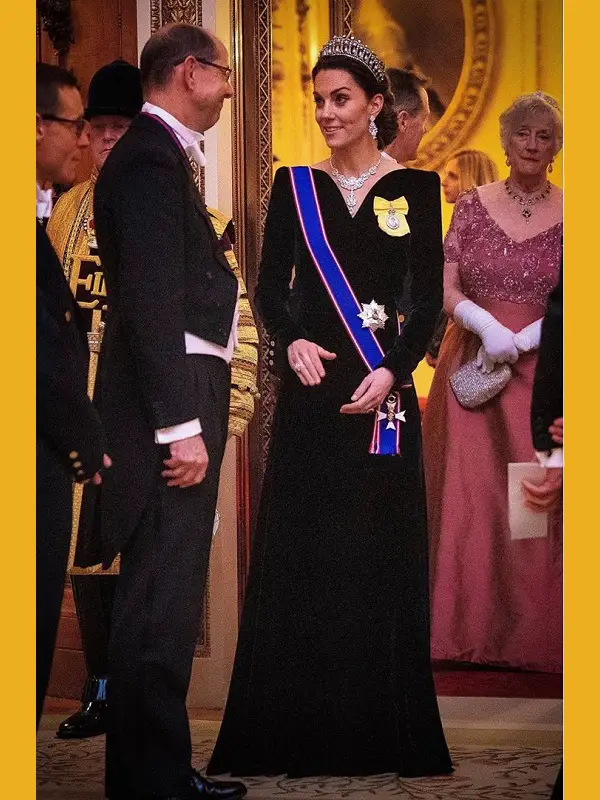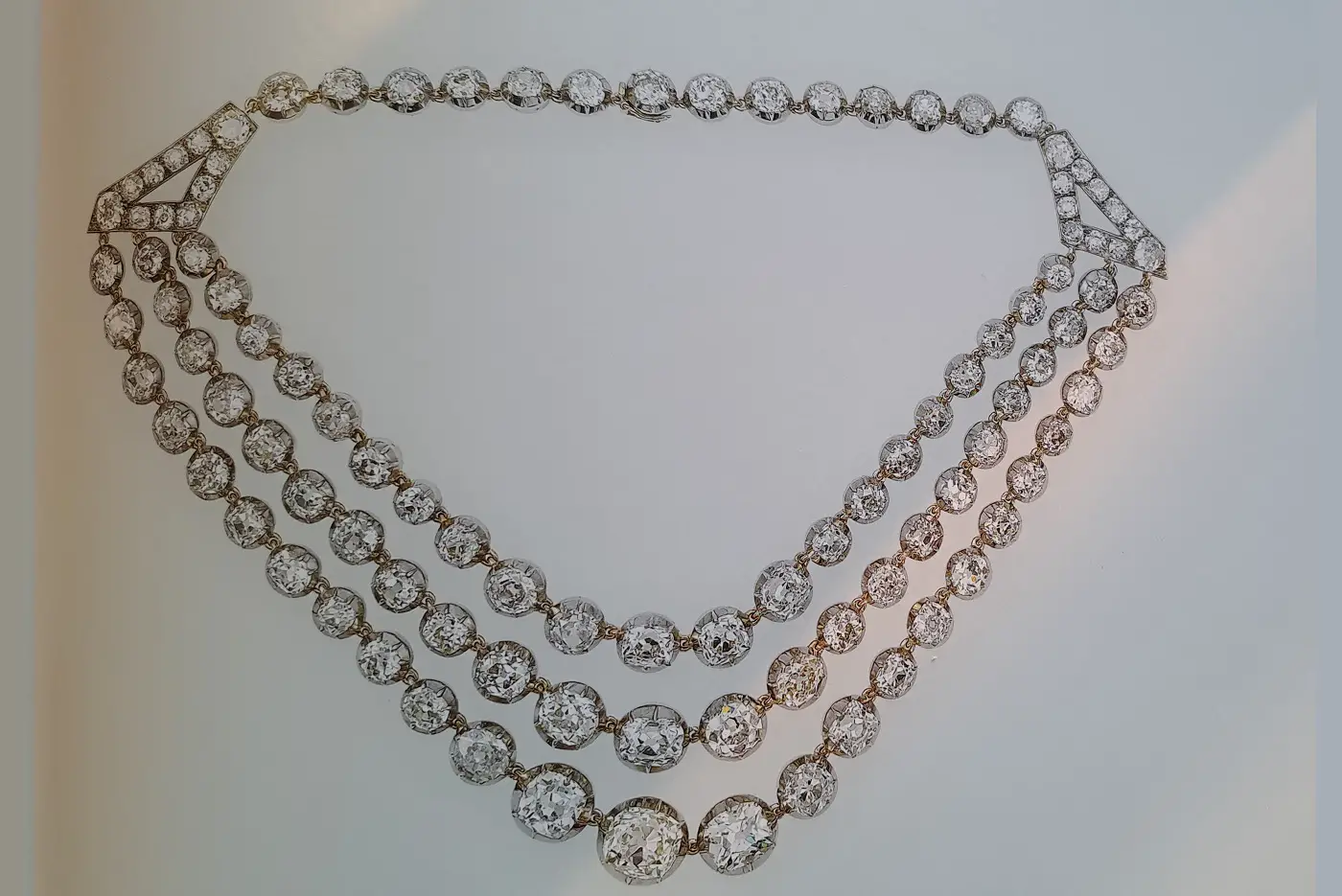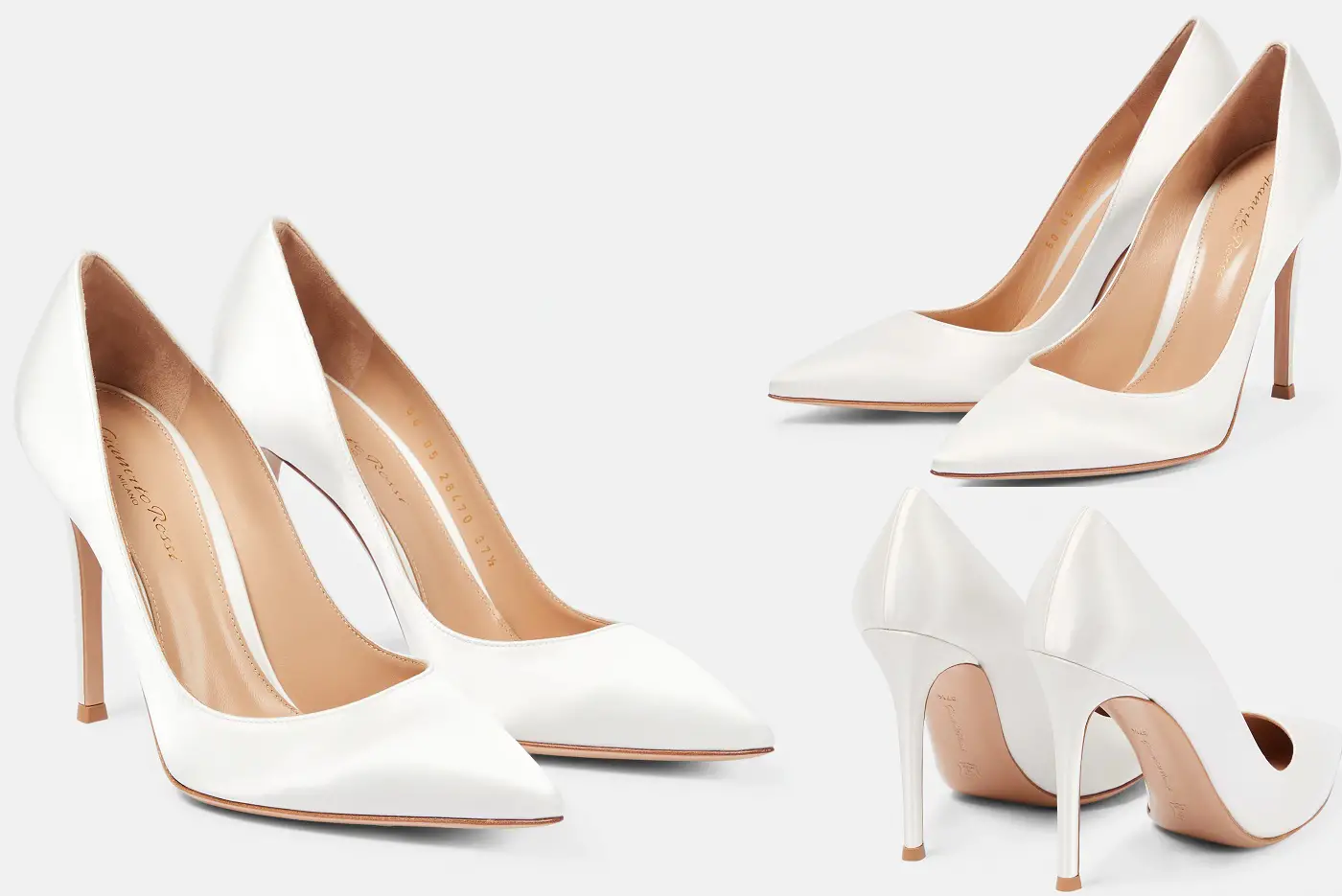The Coronation of King Charles III and Queen Camilla took place at the historic Westminster Abbey. London was decorated and buzzing with celebration vibes for so many days and the rainy weather of the day did not dampen that spirit at all. Foreign Royals, International Political leaders, dignitaries, British Volunteers and various charities representatives witnessed the historical event at the Abbey. For the last nine centuries, the Coronation ceremony has taken place at Westminster Abbey – the Royal church for the Palace of Westminster.
Thousands of well-wishers lined the route of the Procession while hundreds watched the coronation from the screening areas in London. By 8 AM the procession routes and screening areas were full and the security teams were having a hard time keeping the well-wishers away.
Today’s the day!@royalfamily #Coronation pic.twitter.com/kFmvfRDvnp
— The Prince and Princess of Wales (@KensingtonRoyal) May 6, 2023
Escorted by The Sovereign’s Escort of the Household Cavalry, the King and Queen departed Buckingham Palace in the Diamond Jubilee State Coach for Westminster Abbey. The King’s Guard turned out in the Forecourt of Buckingham Palace and gave a Royal Salute as The King, The Queen and other Members of the Royal Family departed Buckingham Palace.
The Diamond Jubilee State Coach was created for Queen Elizabeth II to commemorate the 60th anniversary of Her late Majesty’s reign in 2012, the coach has only ever conveyed the Sovereign, occasionally accompanied by the consort or a visiting Head of State.
Their Majesties are on their way to Westminster Abbey! #Coronation pic.twitter.com/q2iPnOjSfz
— The Royal Family (@RoyalFamily) May 6, 2023
The 1.42 miles long King’s Procession, accompanied by The Sovereign’s Escort of the Household Cavalry, departed Buckingham Palace through the Centre Gate, and proceeded down The Mall, passing through the Admiralty Arch and south of King Charles I Island, down Whitehall and along Parliament Street. The King’s Procession travelled around the east and south sides of Parliament Square to Broad Sanctuary on the way to the Sanctuary of Westminster Abbey, where the Coronation Service began.
👋#Coronation pic.twitter.com/UwoCpV05AN
— The Royal Family (@RoyalFamily) May 6, 2023
The Procession was flanked by over 1,000 Armed Forces route liners from all three Services and Standard Bearers of the Royal British Legion, Uniformed Civilian Services and Community Organisations.
Front of Buckingham Palace, The Mall and Trafalgar Square had specially built areas for 3800 veterans, NHS and social care workers, and representatives of charitable organisations with links to the Royal Family so that they can easily view the procession to and from Buckingham Palace.
The King’s Procession arrived at Westminster Abbey where they were preceded by various Officials carrying Coronation Regalia. Lord Mayor of the City of London carried St. Edward’s Crown while The Duke of Wellington carried The Queen Mary’s Crown. The crowning of the Sovereign is an ancient ceremony, rich in religious significance, history and pageantry. The service is deeply sacred and traditional while reflecting the Monarch’s role today and looking towards the future.
Prince George wore a scarlet tunic decorated with gold lace trim and blue velvet cuffs with an open-fronted design lined in silk. The tunics are worn with ivory silk satin waistcoats trimmed in gold braid with wool trousers and boots. The uniforms were originally made by Ede and Ravenscroft during the reign of Queen Elizabeth and have been re-tailored for the coronation.
The Service was conducted by the Archbishop of Canterbury, the Most Reverend and Right Honourable Justin Welby. The Choirs of Westminster Abbey and His Majesty’s Chapel Royal, St James’s Palace, with choristers from Methodist College, Belfast, and Truro Cathedral Choir, and an octet from the Monteverdi Choir, sang. The music during the Service was directed by Andrew Nethsingha, Organist and Master of the Choristers, at Westminster Abbey.
𝐓𝐡𝐞 𝐑𝐞𝐜𝐨𝐠𝐧𝐢𝐭𝐢𝐨𝐧
The King turns to each of the four points of the compass before The Archbishop of Canterbury proclaims him the ‘undoubted King’. The congregation shouts ‘God Save King Charles!’. pic.twitter.com/g6PiBLVjKu
— The Royal Family (@RoyalFamily) May 6, 2023
The first part of the service was Recognition in which King Charles III was recognised as the Monarch and Charles took the Oath. The Recognition followed; an ancient element of the Coronation Service, in which The King was recognised as the true Monarch. His Majesty turned to each of the four points of the compass to be recognised; to the East, by the Archbishop of Canterbury; to the South, by Lady Eilish Angiolini, a Lady of the Order of the Thistle; to the West, by Christopher Finney, a holder of the George Cross, and to the North, by Baroness Amos, a Lady of the Order of the Garter. Each recognition was marked with fanfare.
The most sacred part of the Coronation Service, The Archbishop of Canterbury anoints His Majesty’s hands, chest and head with holy oil in the Coronation Chair.
Regarded as a moment between the Sovereign and God, the Anointing Screen protects the sanctity of this act. pic.twitter.com/PqC8QXSByX
— The Royal Family (@RoyalFamily) May 6, 2023
The Anglican Archbishop in Jerusalem, who was present during the consecration of the Chrism oil earlier this year, received the Ampulla containing the oil at the High Altar, which was blessed by the Archbishop of Canterbury. Their Majesties removed their Robes of State, and The King sat in the Coronation Chair, on the Cosmati pavement. The Anointing Screen, newly made for the Service and inspired by the window of His Majesty’s Chapel Royal, was brought into position around the Chair by Guardsmen of the Household Division. The Anointing, the most solemn and sacred part of the Service, took place as the choir sang Handel’s ‘Zadok the priest’, which was composed for the Coronation of King George II in 1727 and has become synonymous with such occasions. The Archbishop of Canterbury, assisted by the Dean of Westminster and the Archbishop of York, anointed The King’s hands, chest and head. Afterwards, The King approached the High Altar and knelt, and the Archbishop of Canterbury prayed.
For The Investiture, The King was vested with the Colobium Sidonis, a white linen shift-like tunic; the Supertunica, a full-length, sleeved gold coat; and the Coronation Sword Belt. His Majesty sat in the Coronation Chair as items of Regalia were presented; first, the Spurs, carried by the Lord Great Chamberlain.
Lord President of the Council, The Rt Hon Penny Mordaunt MP offered the Sword. The Sword of Offering, which symbolises the protection of good and the punishment of evil, was delivered to the Archbishop of Canterbury and was placed in The King’s right hand. The King rose, and the Sword was fastened at His Majesty’s waist using the Sword Belt. The King offered the Sword at the Altar, where it was received by the Dean. The Sword was then redeemed with the offering of 100 newly minted 50ps, by the Lord President of the Council, who carried it before The King for the remainder of the Service. Traditionally, the Sword is offered to Westminster Abbey in payment for hosting a Coronation Service, and redeemed by offering a symbolic payment.
The King was presented with the Armills, traditionally referred to as ‘the bracelets of sincerity and wisdom’, by Lord Kamall, the Robe Royal, brought by Baroness Merron, and the Stole Royal, presented by His Royal Highness The Prince of Wales. His Majesty was then invested and sat in the Coronation Chair again. The Orb, symbolising the Christian world, was placed in The King’s right hand by the Archbishop of Canterbury.
The Coronation Glove was presented by Lord Singh, and The King placed it on His Majesty’s right hand. The Sceptre with Cross, a symbol of power and justice, and the Sceptre with Dove, a symbol of equity and mercy, were brought from the Altar by the Primus of the Scottish Episcopal Church and the Archbishop of Wales, and placed in The King’s right and left hands, by the Archbishop of Canterbury.
𝐓𝐡𝐞 𝐂𝐫𝐨𝐰𝐧𝐢𝐧𝐠 𝐨𝐟 𝐓𝐡𝐞 𝐊𝐢𝐧𝐠
The Archbishop of Canterbury places St Edward’s Crown on The King’s anointed head. The clergy, congregation and choir all cry ‘God Save The King’.#Coronation pic.twitter.com/kGrV3W0bky
— The Royal Family (@RoyalFamily) May 6, 2023
For The Crowning, The Dean of Westminster delivered St Edward’s Crown to the Archbishop of Canterbury, who offered a blessing before His Majesty The King is crowned. The Archbishop led the congregation of Westminster Abbey in saying, ‘God save The King’. The bells of the Abbey rang as gun salutes were fired in celebration on Horse Guards Parade, at His Majesty’s Fortress the Tower of London, and at Saluting Stations throughout the United Kingdom, Gibraltar, Bermuda, and His Majesty’s ships at sea. In Westminster Abbey, the Wiener Philharmoniker Fanfare was played by the Coronation Brass Ensemble, as requested by The King. His Majesty was then blessed by ecumenical leaders.
𝐇𝐨𝐦𝐚𝐠𝐞 𝐟𝐫𝐨𝐦 𝐓𝐡𝐞 𝐏𝐫𝐢𝐧𝐜𝐞 𝐨𝐟 𝐖𝐚𝐥𝐞𝐬
The King receives ‘Homage’ (a promise of allegiance and faithfulness), from The Prince of Wales on behalf of The Royal Family. #Coronation pic.twitter.com/VRZJx7XZDd
— The Royal Family (@RoyalFamily) May 6, 2023
After enthroning, the Great Officers of State assembled behind His Majesty’s Throne Chair. The Homage was given by the Archbishop of Canterbury, and The Prince of Wales. The People’s Homage followed, an opportunity for those who wished to be given a voice within the Service, and for those at home to have a chance to be an extension of the Westminster Abbey congregation, if they wished. A fanfare sounded, and the choir sang an Anthem arranged by John Rutter for the Coronation of King George VI.
Next Queen Camilla was crowned. Her Majesty knelt at her Chair of Estate to be anointed on the head by The Archbishop of Canterbury. The Queen’s Ring was presented to Her Majesty by the Keeper of the Jewel House, and Her Majesty was crowned by the Archbishop with Queen Mary’s Crown. The former Bishop of London, Lord Chartres, and the Bishop of Dover, The Rt Revd Rose Hudson-Wilkin, presented Her Majesty with The Queen’s Sceptre with Cross and The Queen’s Rod with Dove. Escorted by the Archbishops of Canterbury and York, the Bishops of Hereford and Norwich, and The Queen’s Companions, Her Majesty was enthroned. A new Anthem, ‘Make a joyful noise’, composed by Andrew Lloyd Webber, was sung by the choir.
After the crowning, The King and Queen headed to the Shrine and removed St Edward’s Crown and Queen Mary’s Crown, before returning to the Chairs of Estate for Communion. The King was presented with bread and wine, which was used for the Holy Sacrament.
At the sound of fanfare, The King, wearing the Imperial State Crown, followed by The Queen, wearing Queen Mary’s Crown, emerge from the Shrine and join the Coronation Procession out of Westminster Abbey as the National Anthem is sung.
The newly-crowned King and Queen return to Buckingham Palace in the Gold State Coach with other members of the Royal Family, following the #Coronation Service at Westminster Abbey. pic.twitter.com/llqslnARYL
— The Royal Family (@RoyalFamily) May 6, 2023
Then flanked by some 4000 military personnel, The King and Queen began their Coronation Procession back to Buckingham Palace in the Gold State Coach.
The Coronation Procession represented the diversity and traditions of the UK and Commonwealth Armed Forces. A full-spectrum display of unique and historic uniforms whose designs are in some cases hundreds of years old, flags from across the Commonwealth and 20 different bands – all marching in exact rhythm – demonstrated the very best of the Armed Forces. They guided Their Majesties back to Buckingham Palace, before conducting The Royal Salute.
The King’s Gold State Coach was followed by the members of the Royal family. The Prince and Princess of Wales with their three children Prince George, Princess Charlotte and Prince Louis in the first coach, Duke and Duchess of Edinburgh, The Lady Louise Mountbatten Windsor and Earl of Wessex in the second coach, The Duke and Duchess of Gloucester with Vice Admiral Sir Tim Laurence in the third coach while Princess Royal, as Colonel of the Blues and Royals (Royal Horse Guards and 1st Dragoons), was the Gold Stick-in-Waiting and rode in the Procession.
At the moment the Crown was placed on the Head of The King in Westminster Abbey, The King’s Troop Royal Horse Artillery fired a six Gun Salvo on Horse Guards Parade.
God Save The King! @BritishArmy @RoyalFamily @DefenceHQ @DCMS @theroyalparks pic.twitter.com/rO0yrUeB8B
— The Army in London (@ArmyInLondon) May 6, 2023
In all four corners of the UK, including at firing stations in Edinburgh, Cardiff and Belfast, Gun Salutes sounded at the moment of The King’s Coronation to celebrate the historic moment. Featuring more than 400 personnel, across 13 locations and deployed Royal Navy ships, 21 rounds were fired in tribute to The King with the exception of The Tower of London and Horse Guards Parade, where a 62-round salute and a six-gun salvo were fired respectively.
Three cheers for Their Majesties!#Coronation pic.twitter.com/7cMWlPBEkI
— The Royal Family (@RoyalFamily) May 6, 2023
After the Royal Salute in the Buckingham Palace Gardens, The Royal family appeared on the balcony to watch the Royal Air Force fly past and greet thousands of well-wishers gathered outside the Palace.
Thank you @rafredarrows for an extraordinary finale to an extraordinary day! 🫡🇬🇧 pic.twitter.com/EGgjBRx55A
— The Royal Family (@RoyalFamily) May 6, 2023
The balcony of Buckingham Palace is one of the most famous in the world. The first recorded royal balcony appearance took place in 1851, when Queen Victoria stepped onto it during celebrations for the opening of the Great Exhibition. Since then, Royal Balcony appearances have marked many occasions from Queen Elizabeth II’s annual official birthday celebrations to watching the RAF Flypast at the end of Trooping the Colour, Royal Weddings, Jubilees, as well as special events of national significance such as the 75th anniversary of the Battle of Britain.
A portrait for History books.
What The Princess of Wales wore at the Coronation of King Charles III
The Princess of Wales‘ outfit for the Coronation was a matter of huge debate for many months. The Prince and Princess of Wales were wearing robes and mantles for the occasion at the request of King Charles III. There were no tiaras for the event but The Princess of Wales definitely found a way to give us a touch of bling.
Releasing the outfit detail, Kensington Palace said, “The Princess of Wales is wearing an Alexander McQueen dress in ivory silk crepe with silver bullion and thread work embroidery featuring rose, thistle, daffodil and shamrock motifs, with the Royal Victorian Order Mantle. On her head, the Princess of Wales is wearing a Jess Collett x Alexander McQueen Headpiece with silver bullion, crystal and silver threadwork three-dimensional leaf embroidery. Princess Charlotte is wearing an Alexander McQueen dress and cape in ivory silk crepe with ivory satin stitch embroidery featuring rose, thistle, daffodil and shamrock motifs. She is wearing a Jess Collett x Alexander McQueen Headpiece similar to the one worn by her mother“.
The Princess of Wales’s white Alexander McQueen gown was a matter of some great speculation. In some pictures it seems, The Princess was wearing a gown with a cape but in another, it looks like a completely different gown. The ivory gown has silver bullion and threadwork embroidery featuring rose, thistle, daffodil and shamrock motifs, the four flowers of England, Scotland, Wales and Ireland.

Catherine’s wedding dress designed by Sarah Burton of Alexander McQueen featured the same flowers.
There were many theories about The Princess of Wales’ ivory gown – but the most plausible is she had two gowns made for the day. One she wore to the ceremony itself and the second she wore for the official portraits. The pictures showed that the only outerwear she wore was the royal blue robe and the neckline of both gowns were different.
The gown that she wore for the official portraits features the same embroidery but a different silhouette.

She has the same silhouette from the label in black.
Catherine topped the outfit with her Dame Grand Cross of the Royal Victorian Order (GCVO) and Grand Cross Mantle of the Royal Victorian Order.
As I discussed on Twitter a long time ago, Tiaras were not part of the dress code. The Princess of Wales wore Jess Collett x Alexander McQueen Headpiece with silver bullion, crystal and silver threadwork three-dimensional leaf embroidery.
The Princess of Wales was wearing Princess Diana’s Diamond and Pearl Earrings. Catherine debuted the earrings at BAFTA in February 2019.

A Royal Jewel that made its debut on the day in The Princess’s Jewel Vault was The Queen’s Diamond Festoon Necklace. King George VI commissioned the necklace in 1950 for the then Princess Elizabeth. The King used 105 loose collet-set diamonds, that were declared Crown heirloom by Queen Mary 1911, from the Royal Family’s jewellery collection and asked Gerrard to design the necklace. Read more about the necklace here.

The Princess of Wales debuted a new pair of white Gianvito Rossi silk pumps.
